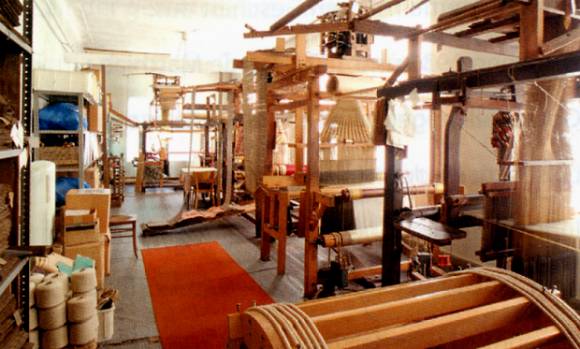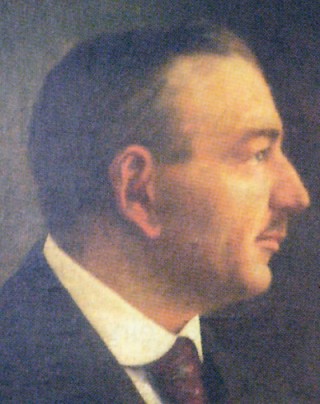
| ANNE WANNER'S Textiles in History / book reviews, articles |
100 Jahre 1905 - 2005 |
|
| The small booklet is about
the development and history of the vestment manufacture
of Hugo Gotzes in Krefeld Krefeld is since the 17th c. an important metropolis of silk. As a property of the House of Orange-Nassau (iin Dutch: Van Oranje-Nassau) it had the status of a religious refuge and a number of mennonite families came here as weavers, spinners, merchants. At first they were working with linen and since the 18th c. mostly in silk. In the 19th c. Krefeld was famous for its silk production. It advanced to be the most important silk city of Germany. (The Mennonites are a group of Christian Anabaptist denominations named after and influenced by the teachings and tradition of Menno Simons (1496-1561). In the 1880s many handweavers lost their jobs as mechanic weaving conquered the town's establishments. It was then the well known priest Franz Bock who helped to introduce the production of vestments, convincing F.J. Casaretto from a family of italian origin, to start in this so far unknown field. Bock encouraged him to use historic motives as design Casaretto together with a number of other weavers found new jobs in vestment manufactures. In 1900 there existed already 12 houses and suceedingly more of them were built up. . |
| Hubert Gotzes (1860-1916)
arrived with his wife and seven children in 1900 in
Krefeld, and in 1905 he founded his establishment. In
1908 he bought the house at Luisenstrasse 15. This house
had been built in 1867/68 to be a silk manufacture. Three of Gotzes' sons were working with the father at Luisenstrasse. The youngest, also with the name Hubert (born 1893) was sent by the father in 1914 to USA, Chicago, where he developped a trade with vestments. |
|
After the
father Gotzes' death in 1916, four of his sons were
responsible for the house for several years. Since 1931 Martin
Gotzes managed the firm on his own. |
 Martin Gotzes |
|
| home content | Last revised 25 August 2006 | For further information contact Anne Wanner wanner@datacomm.ch |